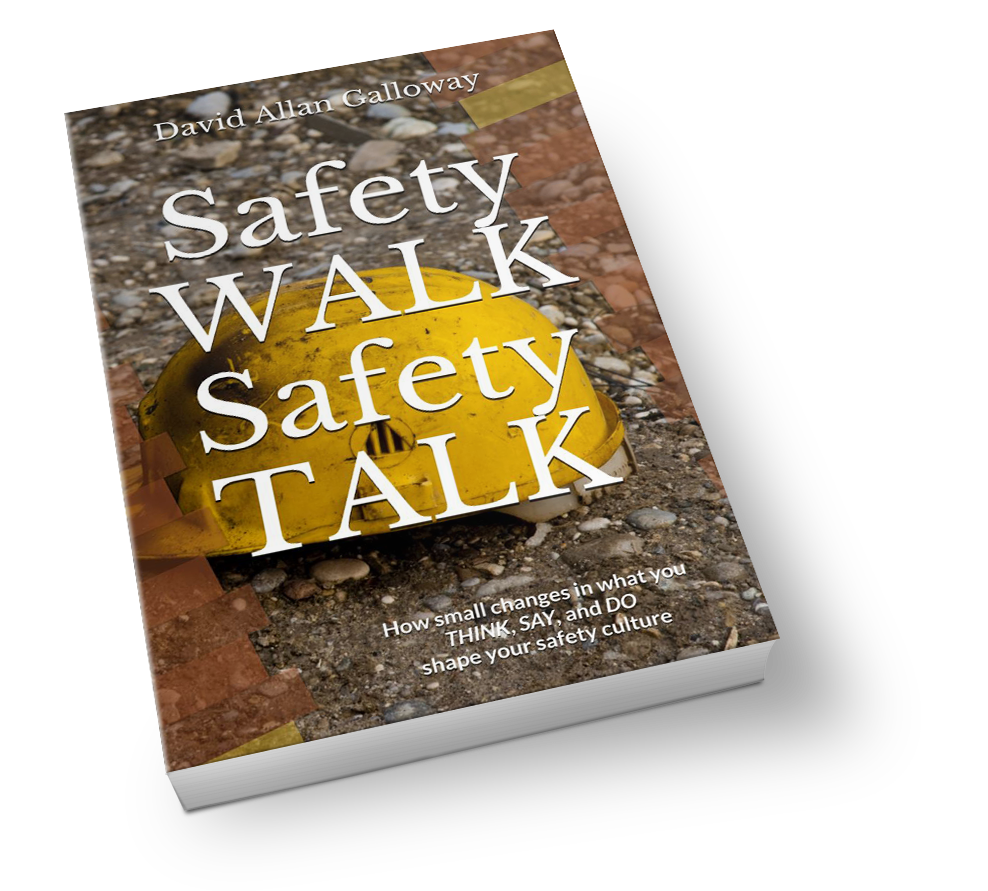Paperback eBook Audiobook on Amazon Audiobook on Audible

Do you want to make a difference?
There are many ways someone in a leadership role can have a positive impact on the lives of their employees. Perhaps there is no leadership responsibility more profound than creating a sustainable, injury-free workplace. Every person who goes to work expects to return home in the same condition. When someone is hurt, the adverse effects of their injury ripple through the employee’s family and friends.
Achieving an injury-free environment is one of the most difficult problems many leaders face. Indeed, during 35 years in manufacturing I never discovered a singular solution to this challenge. However, over these years I observed quite a few leadership actions that significantly contributed to less risk-taking, greater hazard awareness and genuine collaborative efforts among employees and supervisors. Leaders who understood, embraced, and implemented these strategies saw a dramatic reduction in incidents and injuries at their facilities.
In my experience, organizations with the best safety performances do not have a secret. They simply do a lot of small things collectively and strategically well.
That’s really what this book is about. It is a collection of leadership concepts, thoughts, words, and actions that (when strategically implemented) can move your organization toward a better safety future. There are no ‘silver bullets’ here. On the other hand, you don’t have to do all of these things to be successful in your safety journey.
The first section of the book takes a look at some fundamental concepts everyone who is striving to achieve safety excellence should understand. It includes a discussion on compliance versus commitment, how to develop a safety strategy, why people make mistakes and take risks, and an overview of a Just Culture.
The core of the book reviews some key research findings in social psychology, sociology and neuroscience. I share personal experiences of highly effective leadership. And I recount other situations that exemplify the wrong approach. In each case, I discuss how you can leverage these concepts in a practical way to improve your safety leadership skills. Topics include: how our thoughts can drive our behaviors when it comes to safety, how the words we use can be influential on personal decision-making, how social influence and leadership actions can drive safety performance, and how to facilitate the right personal safety conversation.
At the end of each chapter, there is a segment called the SAFETY LEADER’S TOOLBOX. This toolbox contains over 70 practical tools and tips for being a more effective safety leader! Readers are encouraged to consult the SAFETY LEADER’S TOOLBOX for small changes in what you think, say, and do to shape your safety culture.

I invite you to put on your safety shoes and walk with me. Together we will consider how you can lead your organization to exceptional safety performance. Spoiler alert! One essential leadership skill is knowing why, how, and what to talk about when it comes to safety.

Where do you begin? Start with a “Why” of caring. If you start with caring as your personal motive, you won’t have to do everything perfectly. Your employees will want to do the right things for the right reasons.
You can read this book in chapter order. You can also go to a specific chapter to learn more about a particular topic. Either way, you are encouraged to consult the SAFETY LEADER’S TOOLBOX throughout this book for small changes in what you think, say, or do to shape your safety culture.
Choose a set of tools from the TOOLBOX that will enable you to move toward your safety vision.
Start making a difference in the lives of others!
Praise for Safety WALK Safety TALK
…David’s tools can be used for safety management and business management. After 30+ years of experience in manufacturing and distribution, I have never seen a better resource.
…In my opinion, Galloway’s Safety Walk Safety Talk is THE “operating manual” for building and maintaining a permanently safe and caring organizational environment.
…This book does a fantastic job of describing how to achieve a safety culture of commitment and why that is important.
…Throughout the book, Galloway uses very pertinent examples of various roadblocks to safety culture excellence; but unlike many books on this subject, David pours out 35 years’ worth of extremely practical advice in “The Safety Leader’s TOOLBOX” that ends every chapter.
Safety Walk Safety Talk is one of the most pragmatic books on safety culture improvement that I have ever read and I have read plenty… Highly Recommended!
…If you want a book to help people have the right ideas in their head about living out regard for human life and safety, this is it. Dave Galloway is as authentic in person as he is in the book. I wholeheartedly recommend it.
…David Galloway’s Safety Walk Safety Talk is a must read and reference for operational leaders that desire to create a sustainable improvement in their safety performance. Galloway’s passion for safety is evident in each chapter as he provides a very practical step by step process and set of tools for leaders to use to create and shape a culture around safety.
Safety Walk Safety Talk is well-written, insightful and interesting to read. Mr. Galloway’s extensive use of data, examples and immediately applicable tools makes this a great reference for people managers at all levels. His research defines the everyday leadership behaviors needed to ensure an injury-free workplace.
Purchase Options

